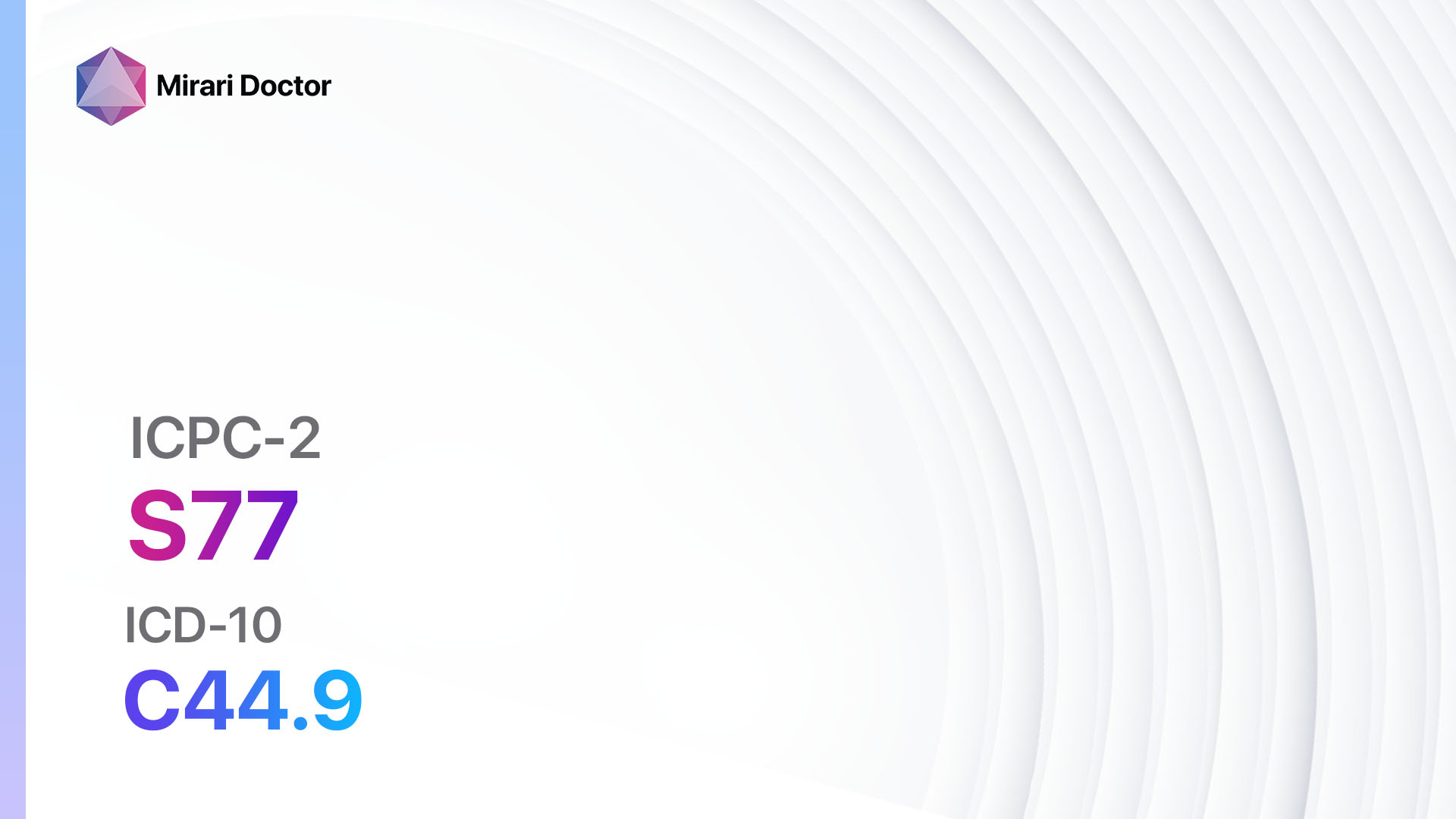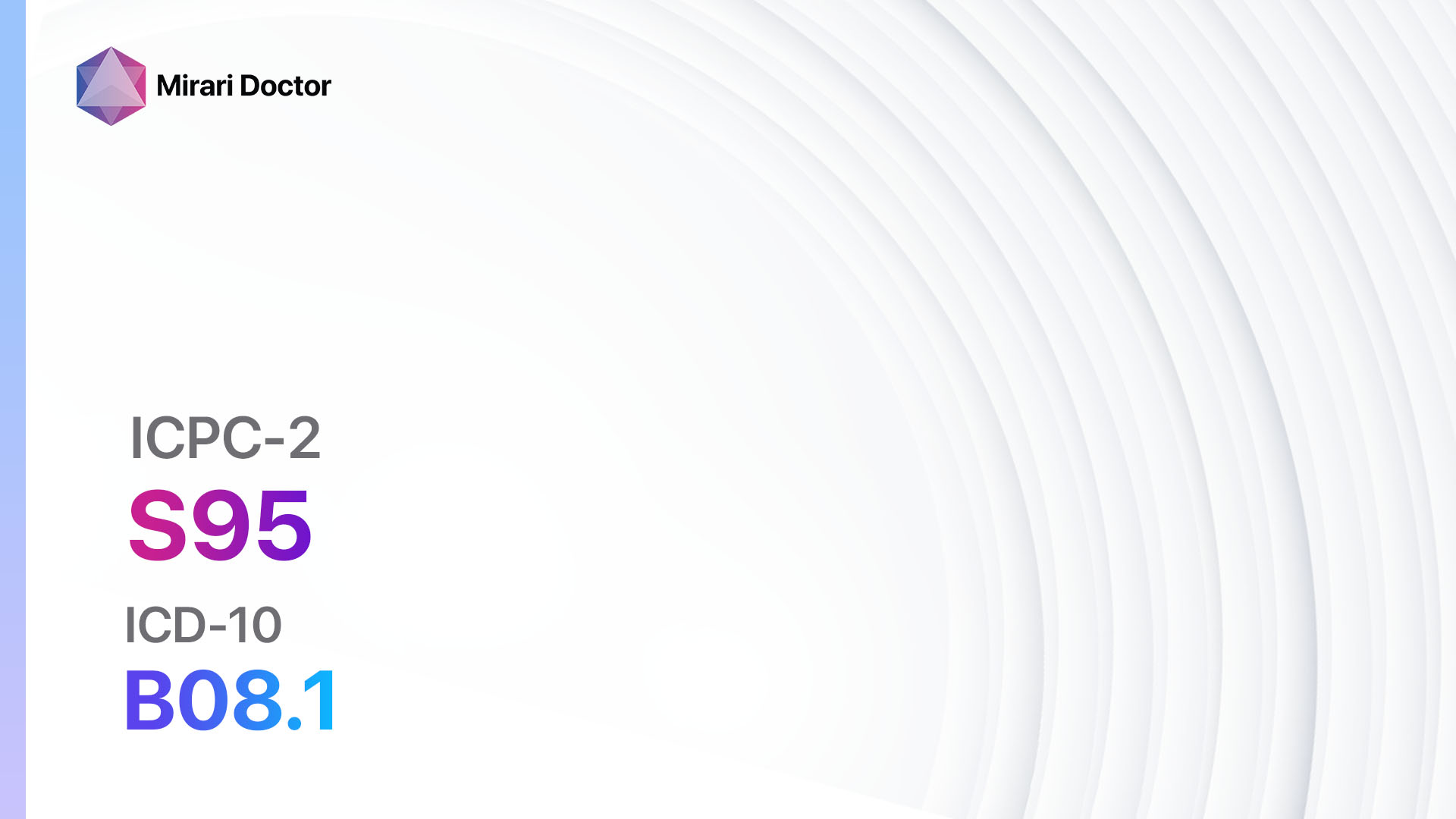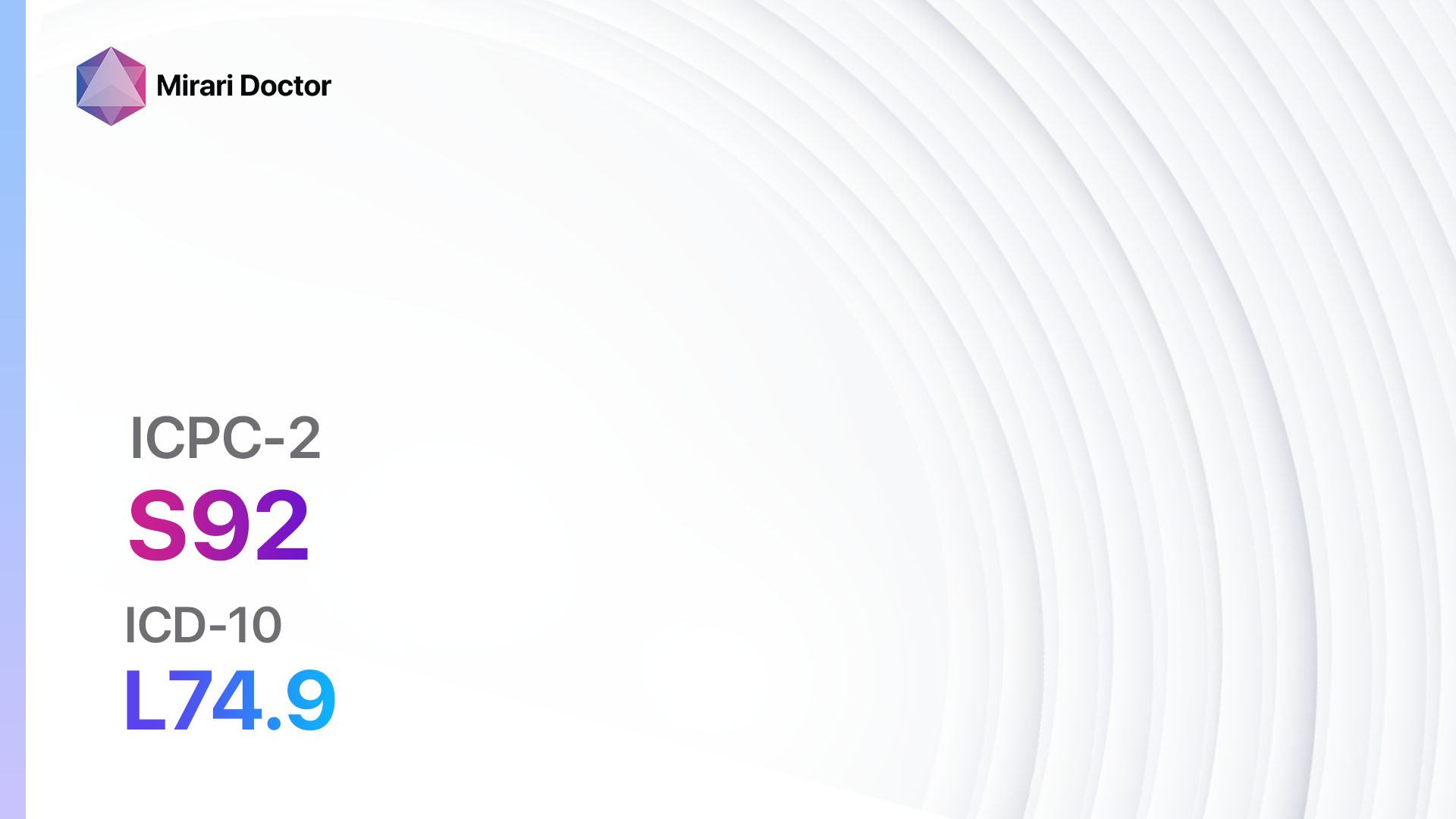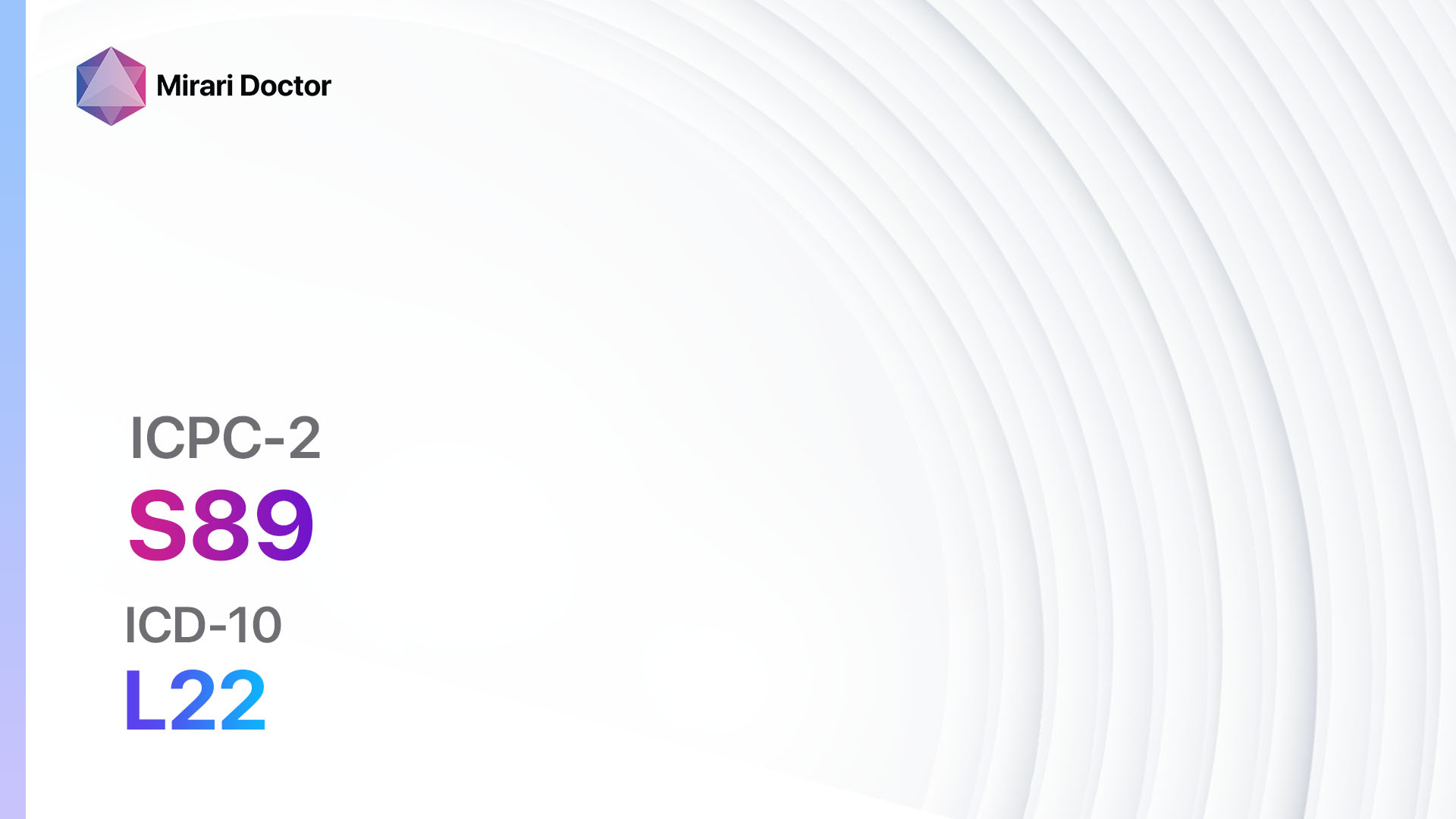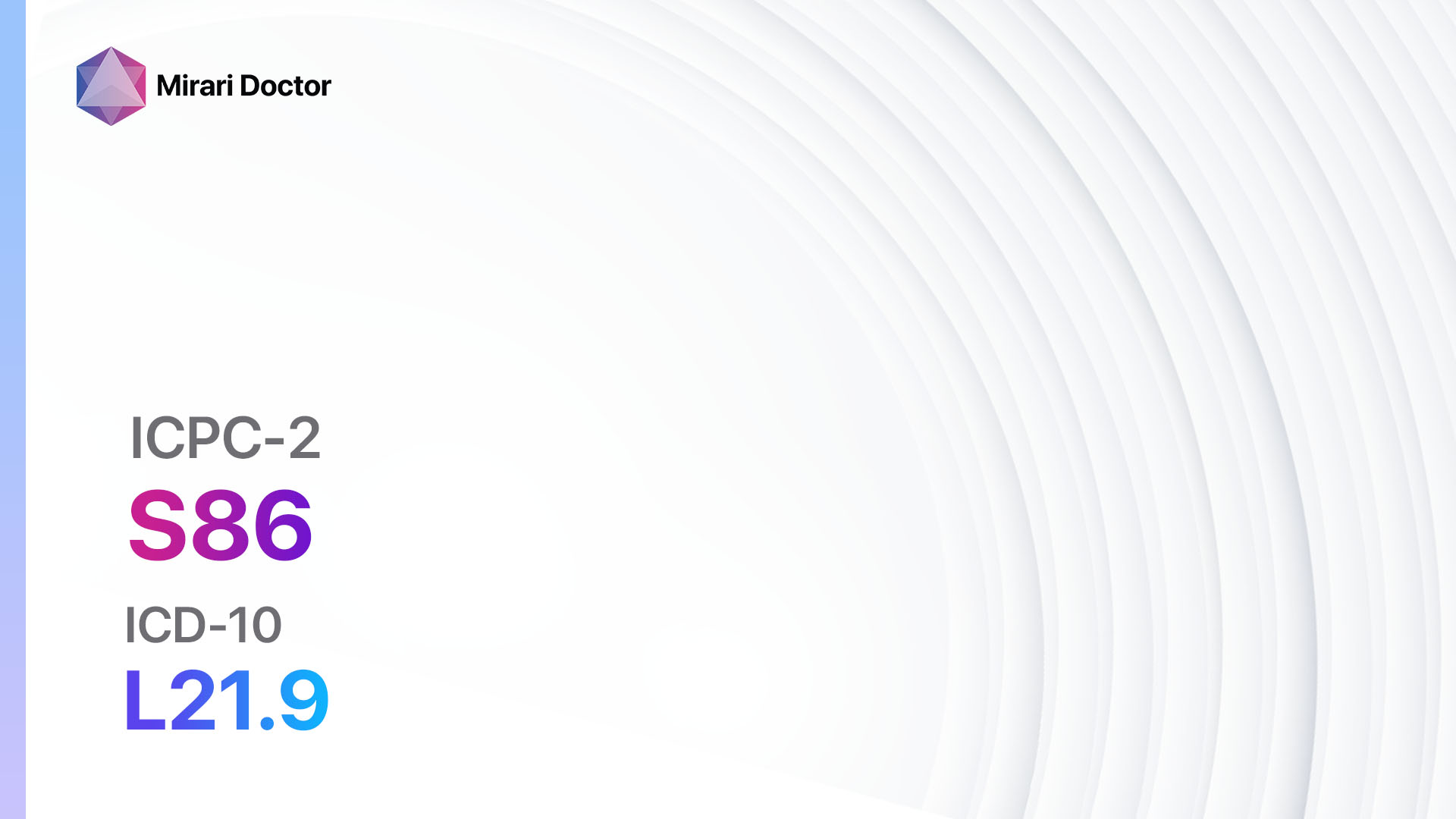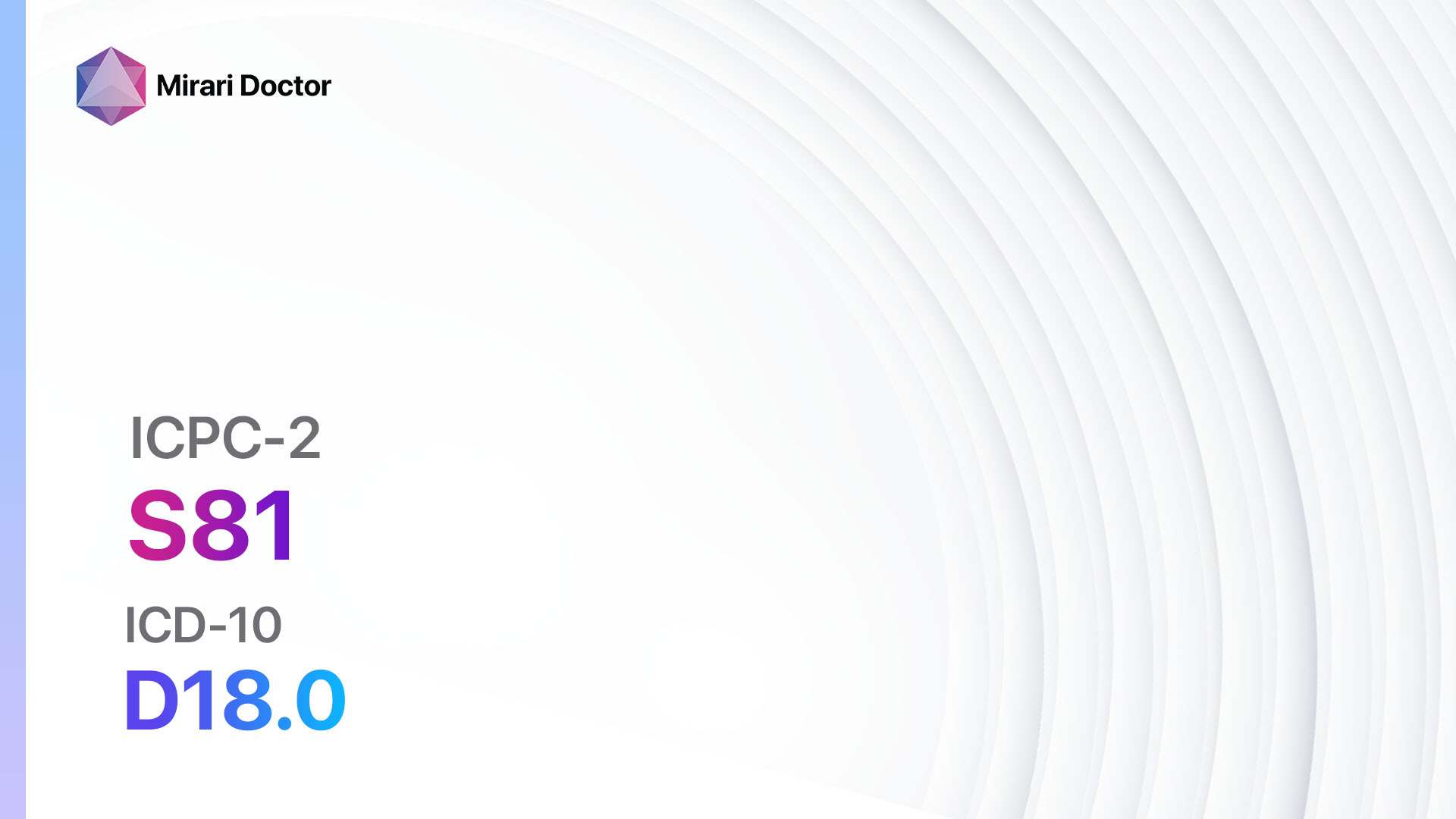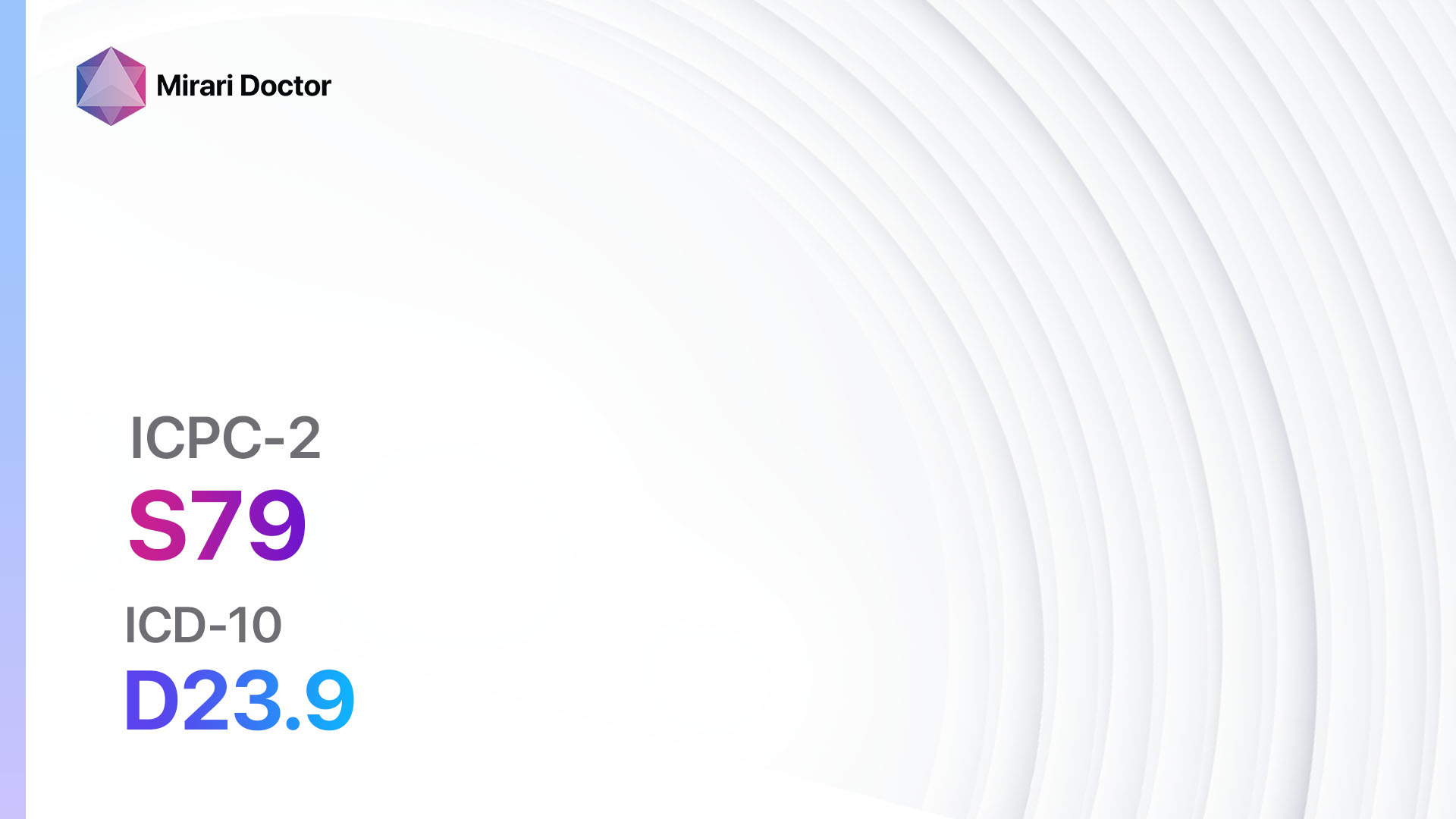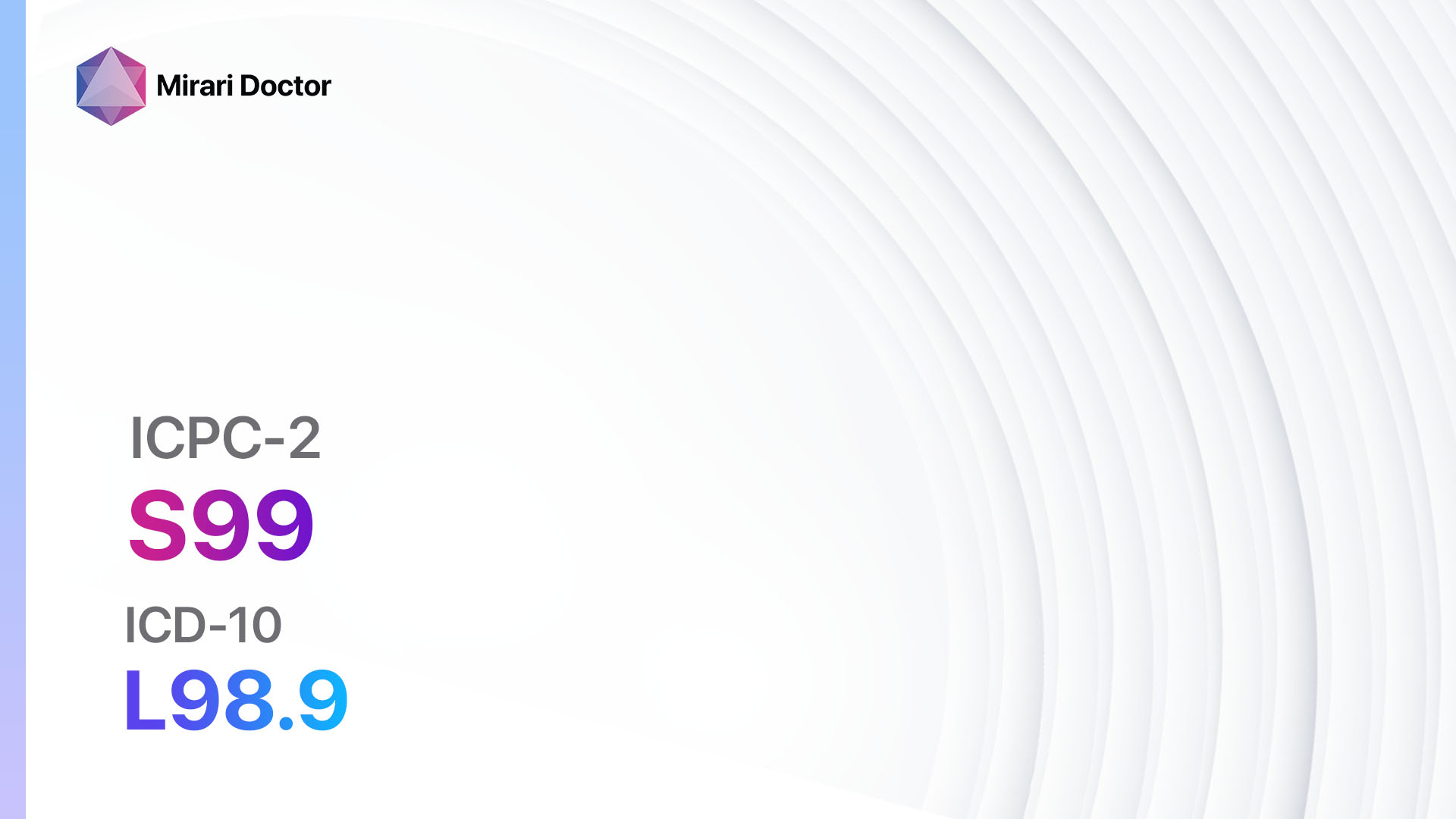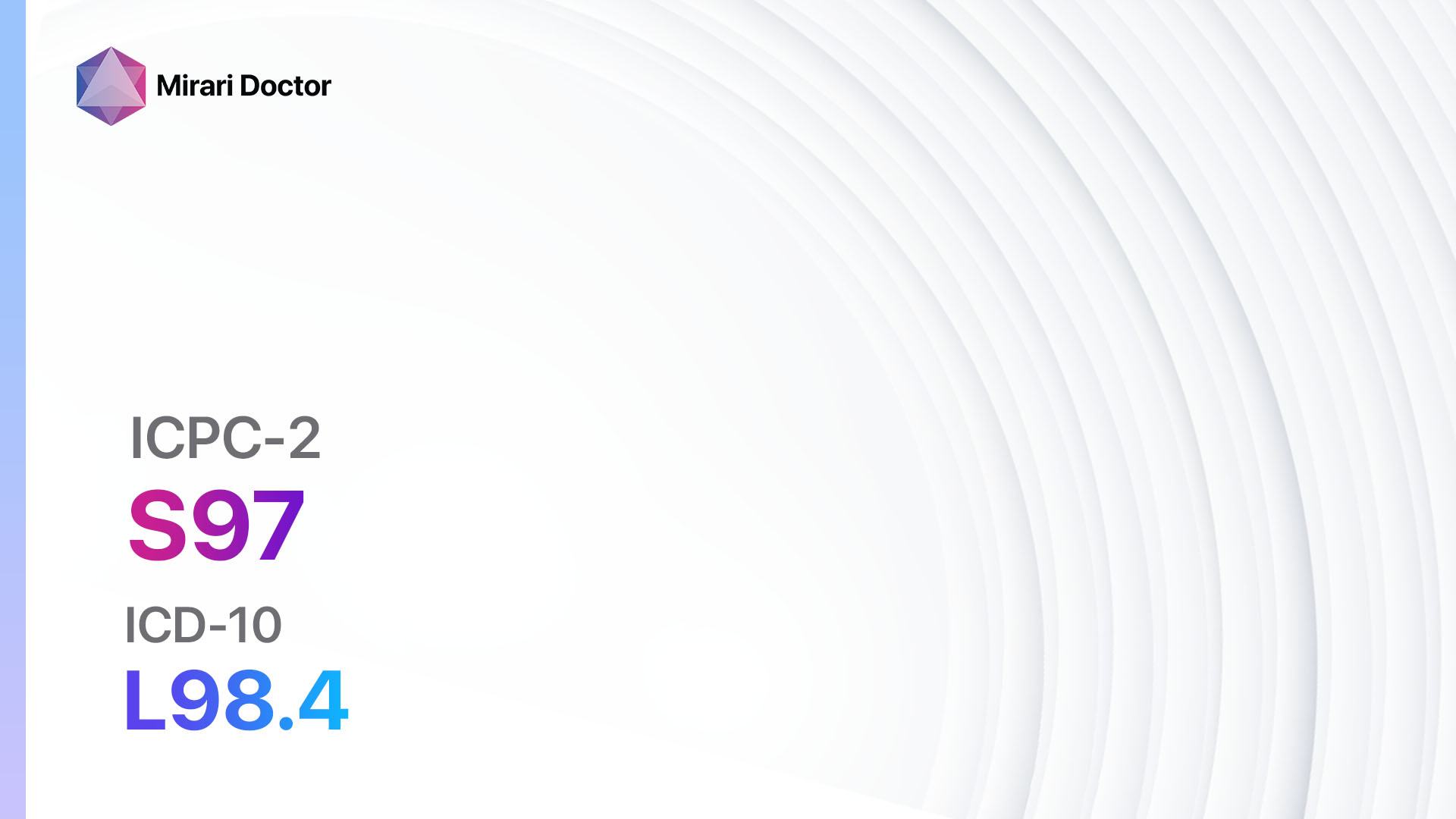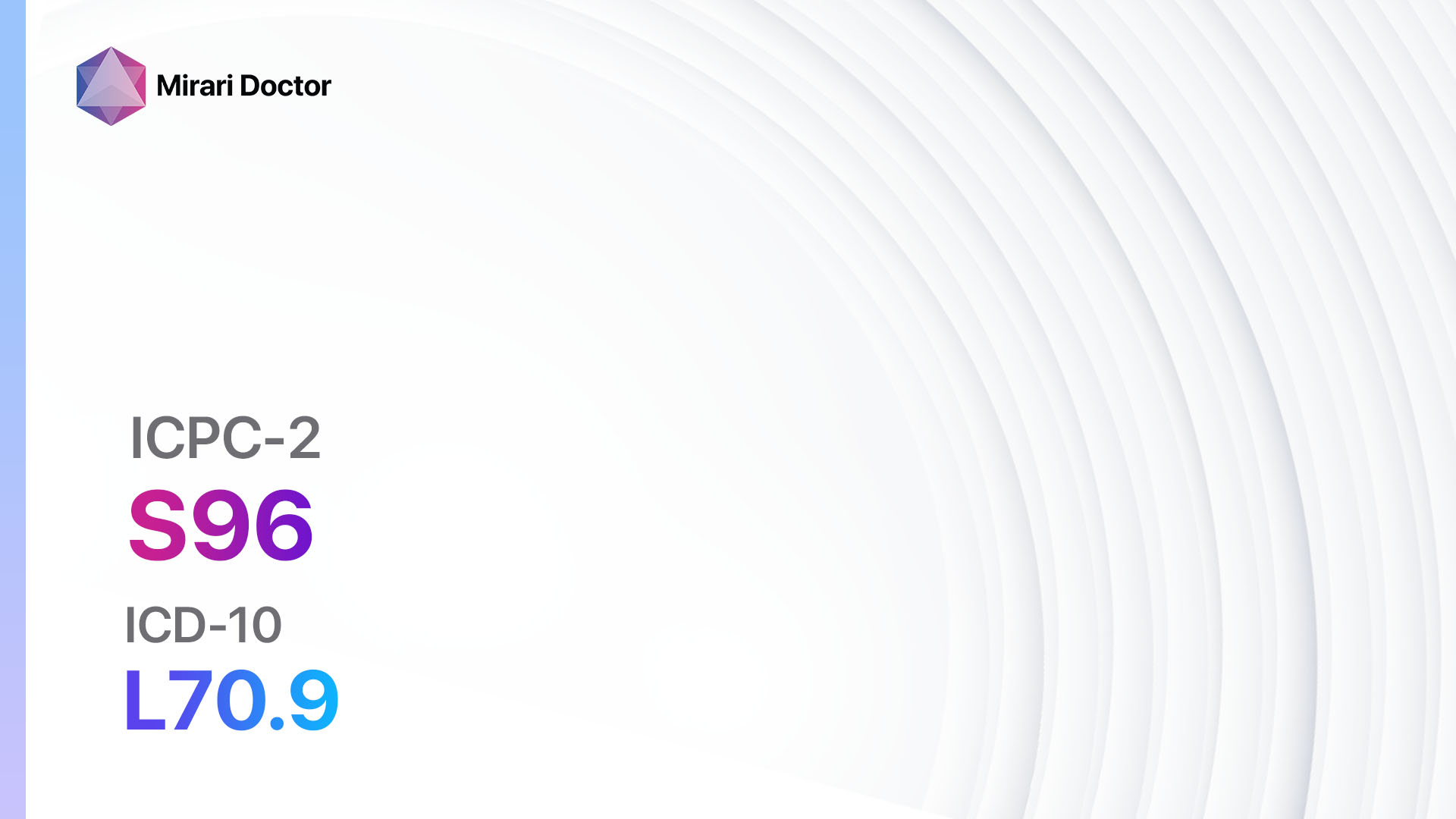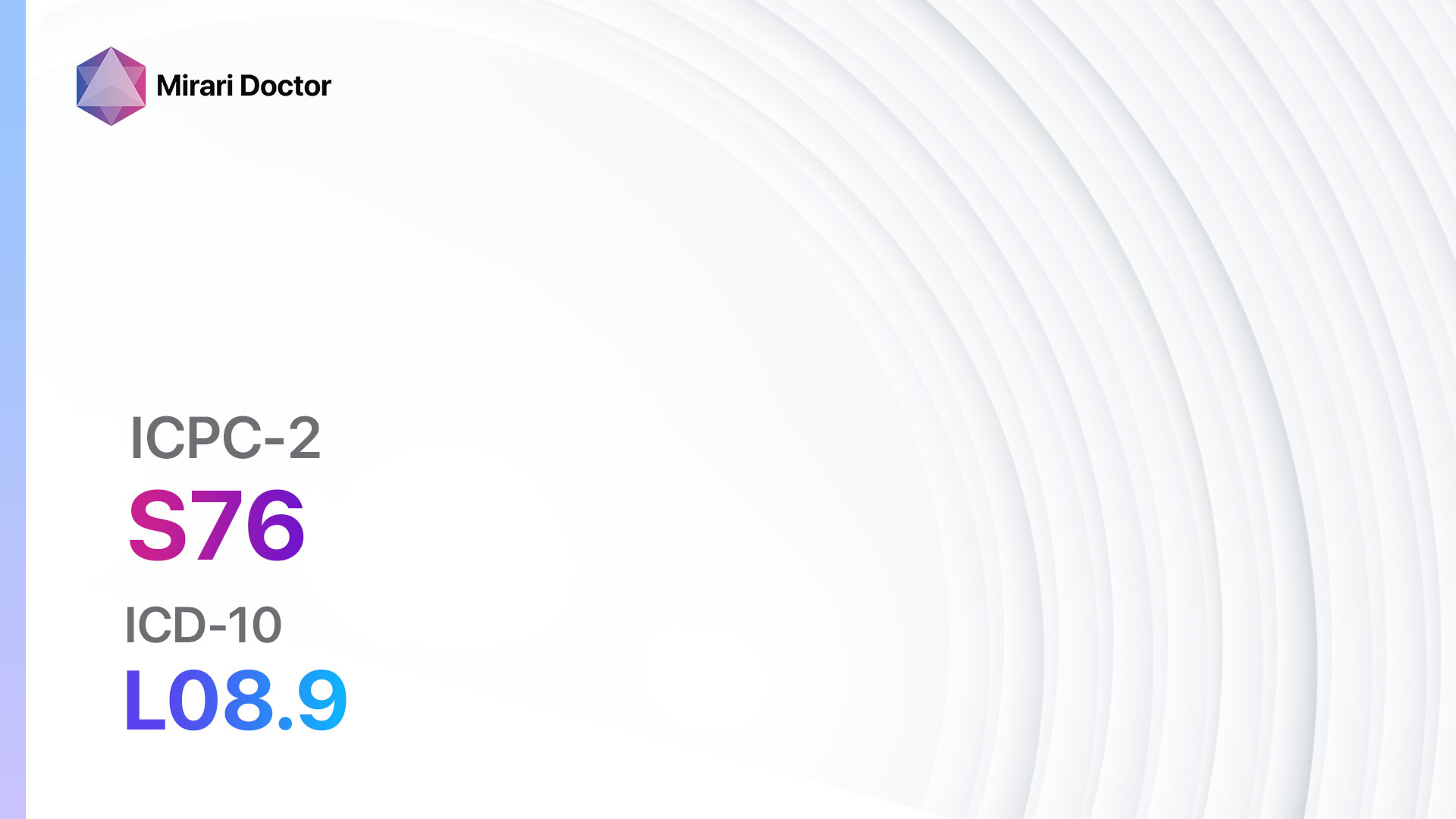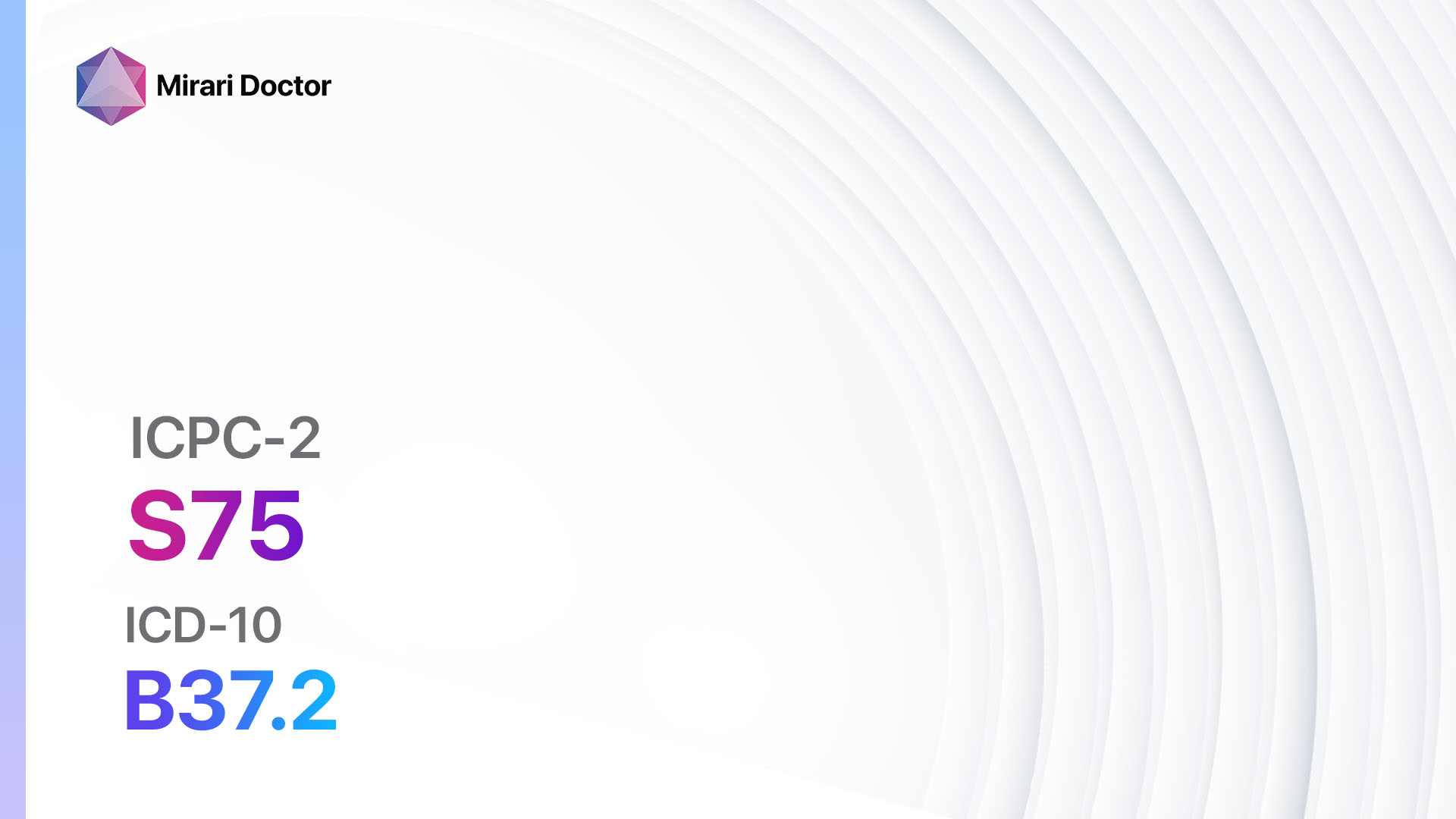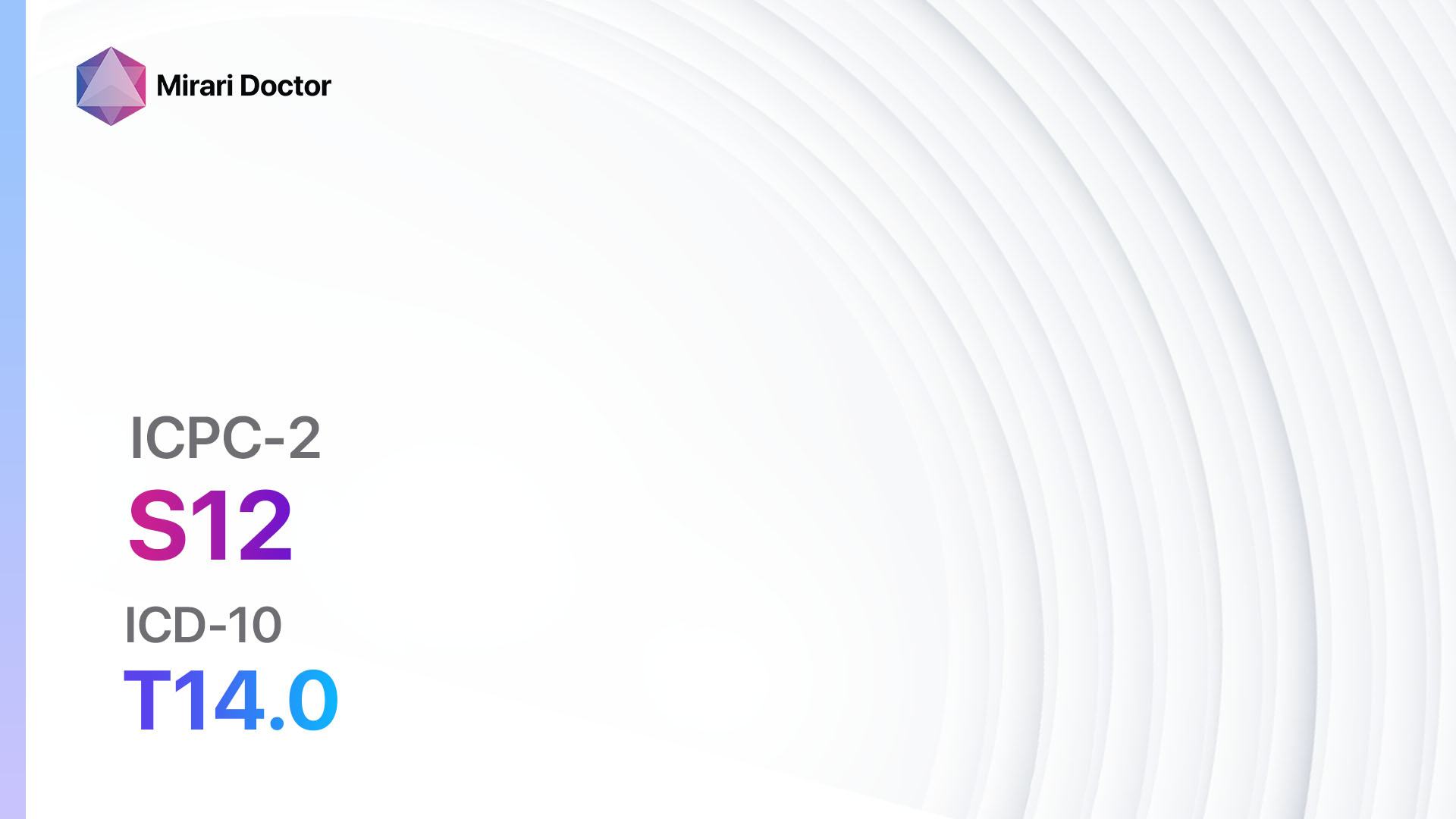
Introduction
Insect bites and stings are common occurrences and can cause a range of symptoms and complications[1]. This guide aims to provide healthcare professionals with a comprehensive approach to diagnosing and managing insect bites and stings.
Codes
- ICPC-2 Code: S12 Insect bite/sting[2]
- ICD-10 Code: T14.0 Superficial injury of unspecified body region[3]
Symptoms
- Itching: Patients may experience localized itching at the site of the bite or sting[4].
- Redness and swelling: Inflammation and swelling are common symptoms associated with insect bites and stings[5].
- Pain or burning sensation: Some individuals may experience pain or a burning sensation at the site of the bite or sting[6].
- Formation of a blister: In certain cases, a blister may develop at the site of the bite or sting[7].
- Allergic reactions: Some individuals may experience severe allergic reactions, including difficulty breathing, hives, or swelling of the face, lips, or throat[8].
Causes
- Insect bites: Bites from insects such as mosquitoes, fleas, bedbugs, or mites can cause localized skin reactions[9].
- Insect stings: Stings from bees, wasps, hornets, or ants can cause localized skin reactions and, in some cases, severe allergic reactions[10].
Diagnostic Steps
Medical History
- Gather information about the patient’s recent exposure to insects, such as camping trips, outdoor activities, or travel to areas with a high insect population.
- Ask about the timing and progression of symptoms, including the appearance of any allergic reactions.
- Inquire about the patient’s medical history, including any known allergies or previous reactions to insect bites or stings.
Physical Examination
- Inspect the affected area for signs of inflammation, redness, swelling, or blister formation.
- Assess the patient for any signs of an allergic reaction, such as difficulty breathing, hives, or swelling of the face, lips, or throat.
Determine Severity
- Mild: Localized symptoms such as itching, redness, and swelling without any systemic symptoms.
- Moderate: Moderate localized symptoms with mild systemic symptoms, such as mild difficulty breathing or mild swelling of the face or lips.
- Severe: Severe localized symptoms with significant systemic symptoms, such as severe difficulty breathing, severe swelling of the face or lips, or signs of anaphylaxis.
Laboratory Tests
- In general, laboratory tests are not necessary for the diagnosis of insect bites or stings. However, in cases of severe allergic reactions or anaphylaxis, blood tests may be performed to assess the patient’s immune response and identify potential allergens.
Diagnostic Imaging
- Diagnostic imaging is not typically necessary for the diagnosis of insect bites or stings.
Other Tests
- In certain cases, additional tests may be necessary to rule out other potential causes of symptoms or to assess for complications. These may include skin tests for specific allergens or cultures of the affected area to identify any secondary infections.
Follow-up and Patient Education
- Advise the patient on self-care measures, such as cleaning the affected area with soap and water, applying cold compresses to reduce swelling, and using over-the-counter antihistamines or topical corticosteroids to relieve itching and inflammation.
- Instruct the patient to seek medical attention if symptoms worsen or if they develop signs of a severe allergic reaction, such as difficulty breathing or swelling of the face or throat.
- Provide education on prevention strategies, such as wearing protective clothing, using insect repellents, and avoiding known insect habitats.
Possible Interventions
Traditional Interventions
Medications:
Top 5 drugs for Insect bite/sting:
- Antihistamines (e.g., Diphenhydramine, Cetirizine):
- Cost: Generic versions can be $3-$20/month.
- Contraindications: Hypersensitivity to antihistamines.
- Side effects: Drowsiness, dry mouth, dizziness.
- Severe side effects: Rare, but may include severe allergic reactions.
- Drug interactions: Sedatives, alcohol.
- Warning: May cause drowsiness, avoid driving or operating machinery.
- Topical corticosteroids (e.g., Hydrocortisone cream):
- Cost: Generic versions can be $5-$15/tube.
- Contraindications: Hypersensitivity to corticosteroids.
- Side effects: Skin thinning, skin discoloration.
- Severe side effects: Rare, but may include severe allergic reactions.
- Drug interactions: None significant.
- Warning: Avoid use on open wounds or broken skin for an extended period.
- Analgesics (e.g., Acetaminophen, Ibuprofen):
- Cost: Generic versions can be $3-$10/month.
- Contraindications: Hypersensitivity to analgesics, active gastrointestinal bleeding.
- Side effects: Upset stomach, dizziness.
- Severe side effects: Rare, but may include severe allergic reactions.
- Drug interactions: Other pain medications, blood thinners.
- Warning: Follow recommended dosages and avoid long-term use without medical supervision.
- Epinephrine auto-injector (e.g., EpiPen):
- Cost: $100-$300 per device.
- Contraindications: None, but caution in patients with certain heart conditions.
- Side effects: Increased heart rate, anxiety.
- Severe side effects: Rare, but may include severe allergic reactions.
- Drug interactions: None significant.
- Warning: Prescribed for patients with a history of severe allergic reactions.
- Systemic corticosteroids (e.g., Prednisone):
- Cost: Generic versions can be $10-$30/month.
- Contraindications: Hypersensitivity to corticosteroids, active infections.
- Side effects: Increased appetite, weight gain, mood changes.
- Severe side effects: Rare, but may include severe allergic reactions.
- Drug interactions: Other medications that can affect the immune system.
- Warning: Prescribed for severe allergic reactions or anaphylaxis.
Alternative Drugs:
- Antibiotics: Prescribed if there is evidence of a secondary bacterial infection.
- Immunotherapy: In cases of severe allergic reactions, referral to an allergist for immunotherapy may be considered.
Surgical Procedures:
- Surgical procedures are not typically necessary for the treatment of insect bites or stings.
Alternative Interventions
- Cold compress: Applying a cold compress to the affected area can help reduce swelling and relieve pain. Cost: Free.
- Aloe vera gel: Applying aloe vera gel to the affected area can help soothe the skin and reduce inflammation. Cost: $5-$10 per bottle.
- Tea tree oil: Applying diluted tea tree oil to the affected area may help reduce itching and prevent infection. Cost: $5-$10 per bottle.
- Calamine lotion: Applying calamine lotion to the affected area can help relieve itching and reduce inflammation. Cost: $5-$10 per bottle.
- Baking soda paste: Mixing baking soda with water to create a paste and applying it to the affected area can help reduce itching and inflammation. Cost: $1-$5 per box of baking soda.
Lifestyle Interventions
- Avoidance: Educate the patient on strategies to avoid insect bites and stings, such as wearing protective clothing, using insect repellents, and avoiding known insect habitats. Cost: Varies.
- Bed netting: Encourage the use of bed netting to prevent mosquito bites during sleep. Cost: $10-$20 per net.
- Insect repellents: Recommend the use of insect repellents containing DEET or picaridin to repel insects. Cost: $5-$15 per bottle.
- Proper clothing: Advise the patient to wear long sleeves, pants, and closed-toe shoes when in areas with a high insect population. Cost: Varies.
- Outdoor precautions: Instruct the patient to avoid wearing bright colors or floral patterns, as they may attract insects. Cost: None.
It is important to note that the cost ranges provided are approximate and may vary depending on the location and availability of the interventions.
Mirari Cold Plasma Alternative Intervention
Understanding Mirari Cold Plasma
- Safe and Non-Invasive Treatment: Mirari Cold Plasma is a safe and non-invasive treatment option for various skin conditions. It does not require incisions, minimizing the risk of scarring, bleeding, or tissue damage.
- Efficient Extraction of Foreign Bodies: Mirari Cold Plasma facilitates the removal of foreign bodies from the skin by degrading and dissociating organic matter, allowing easier access and extraction.
- Pain Reduction and Comfort: Mirari Cold Plasma has a local analgesic effect, providing pain relief during the treatment, making it more comfortable for the patient.
- Reduced Risk of Infection: Mirari Cold Plasma has antimicrobial properties, effectively killing bacteria and reducing the risk of infection.
- Accelerated Healing and Minimal Scarring: Mirari Cold Plasma stimulates wound healing and tissue regeneration, reducing healing time and minimizing the formation of scars.
Mirari Cold Plasma Prescription
Video instructions for using Mirari Cold Plasma Device – S12 Insect bite/sting (ICD-10:T14.0)
| Mild | Moderate | Severe |
| Mode setting: 1 (Infection) Location: 0 (Localized) Morning: 15 minutes, Evening: 15 minutes |
Mode setting: 1 (Infection) Location: 0 (Localized) Morning: 30 minutes, Lunch: 30 minutes, Evening: 30 minutes |
Mode setting: 1 (Infection) Location: 0 (Localized) Morning: 30 minutes, Lunch: 30 minutes, Evening: 30 minutes |
| Mode setting: 2 (Wound Healing) Location: 0 (Localized) Morning: 15 minutes, Evening: 15 minutes |
Mode setting: 2 (Wound Healing) Location: 0 (Localized) Morning: 30 minutes, Lunch: 30 minutes, Evening: 30 minutes |
Mode setting: 2 (Wound Healing) Location: 0 (Localized) Morning: 30 minutes, Lunch: 30 minutes, Evening: 30 minutes |
| Mode setting: 10 (Dermatitis/Fungus) Location: 0 (Localized) Morning: 15 minutes, Evening: 15 minutes |
Mode setting: 10 (Dermatitis/Fungus) Location: 0 (Localized) Morning: 30 minutes, Lunch: 30 minutes, Evening: 30 minutes |
Mode setting: 10 (Dermatitis/Fungus) Location: 0 (Localized) Morning: 30 minutes, Lunch: 30 minutes, Evening: 30 minutes |
| Total Morning: 45 minutes approx. $7.50 USD, Evening: 45 minutes approx. $7.50 USD |
Total Morning: 90 minutes approx. $15 USD, Lunch: 90 minutes approx. $15 USD, Evening: 90 minutes approx. $15 USD |
Total Morning: 90 minutes approx. $15 USD, Lunch: 90 minutes approx. $15 USD, Evening: 90 minutes approx. $15 USD |
| Usual treatment for 7-60 days approx. $105 USD – $900 USD | Usual treatment for 6-8 weeks approx. $1,890 USD – $2,520 USD | Usual treatment for 3-6 months approx. $4,050 USD – $8,100 USD |
 |
|
Use the Mirari Cold Plasma device to treat Insect bite/sting effectively.
WARNING: MIRARI COLD PLASMA IS DESIGNED FOR THE HUMAN BODY WITHOUT ANY ARTIFICIAL OR THIRD PARTY PRODUCTS. USE OF OTHER PRODUCTS IN COMBINATION WITH MIRARI COLD PLASMA MAY CAUSE UNPREDICTABLE EFFECTS, HARM OR INJURY. PLEASE CONSULT A MEDICAL PROFESSIONAL BEFORE COMBINING ANY OTHER PRODUCTS WITH USE OF MIRARI.
Step 1: Cleanse the Skin
- Start by cleaning the affected area of the skin with a gentle cleanser or mild soap and water. Gently pat the area dry with a clean towel.
Step 2: Prepare the Mirari Cold Plasma device
- Ensure that the Mirari Cold Plasma device is fully charged or has fresh batteries as per the manufacturer’s instructions. Make sure the device is clean and in good working condition.
- Switch on the Mirari device using the power button or by following the specific instructions provided with the device.
- Some Mirari devices may have adjustable settings for intensity or treatment duration. Follow the manufacturer’s instructions to select the appropriate settings based on your needs and the recommended guidelines.
Step 3: Apply the Device
- Place the Mirari device in direct contact with the affected area of the skin. Gently glide or hold the device over the skin surface, ensuring even coverage of the area experiencing.
- Slowly move the Mirari device in a circular motion or follow a specific pattern as indicated in the user manual. This helps ensure thorough treatment coverage.
Step 4: Monitor and Assess:
- Keep track of your progress and evaluate the effectiveness of the Mirari device in managing your Insect bite/sting. If you have any concerns or notice any adverse reactions, consult with your health care professional.
Note
This guide is for informational purposes only and should not replace the advice of a medical professional. Always consult with your healthcare provider or a qualified medical professional for personal advice, diagnosis, or treatment. Do not solely rely on the information presented here for decisions about your health. Use of this information is at your own risk. The authors of this guide, nor any associated entities or platforms, are not responsible for any potential adverse effects or outcomes based on the content.
Mirari Cold Plasma System Disclaimer
- Purpose: The Mirari Cold Plasma System is a Class 2 medical device designed for use by trained healthcare professionals. It is registered for use in Thailand and Vietnam. It is not intended for use outside of these locations.
- Informational Use: The content and information provided with the device are for educational and informational purposes only. They are not a substitute for professional medical advice or care.
- Variable Outcomes: While the device is approved for specific uses, individual outcomes can differ. We do not assert or guarantee specific medical outcomes.
- Consultation: Prior to utilizing the device or making decisions based on its content, it is essential to consult with a Certified Mirari Tele-Therapist and your medical healthcare provider regarding specific protocols.
- Liability: By using this device, users are acknowledging and accepting all potential risks. Neither the manufacturer nor the distributor will be held accountable for any adverse reactions, injuries, or damages stemming from its use.
- Geographical Availability: This device has received approval for designated purposes by the Thai and Vietnam FDA. As of now, outside of Thailand and Vietnam, the Mirari Cold Plasma System is not available for purchase or use.
References
- Steen CJ, Carbonaro PA, Schwartz RA. Arthropods in dermatology. J Am Acad Dermatol. 2004;50(6):819-842. doi:10.1016/j.jaad.2003.12.019
- ICPC-2: International Classification of Primary Care, Second edition. Oxford University Press; 1998.
- ICD-10: International Statistical Classification of Diseases and Related Health Problems 10th Revision. World Health Organization; 2019.
- Goddard J. Physician’s Guide to Arthropods of Medical Importance. 6th ed. CRC Press; 2012.
- Diaz JH. Hymenopterid bites, stings, allergic reactions, and the impact of hurricanes on hymenopterid-inflicted injuries. J La State Med Soc. 2007;159(3):149-157.
- Isbister GK, White J. Clinical consequences of spider bites: recent advances in our understanding. Toxicon. 2004;43(5):477-492. doi:10.1016/j.toxicon.2004.02.002
- Vetter RS, Isbister GK. Medical aspects of spider bites. Annu Rev Entomol. 2008;53:409-429. doi:10.1146/annurev.ento.53.103106.093503
- Golden DB. Insect sting anaphylaxis. Immunol Allergy Clin North Am. 2007;27(2):261-vii. doi:10.1016/j.iac.2007.03.008
- Goddard J, deShazo R. Bed bugs (Cimex lectularius) and clinical consequences of their bites. JAMA. 2009;301(13):1358-1366. doi:10.1001/jama.2009.405
- Fitzgerald KT, Flood AA. Hymenoptera stings. Clin Tech Small Anim Pract. 2006;21(4):194-204. doi:10.1053/j.ctsap.2006.10.002
Related articles
Made in USA



